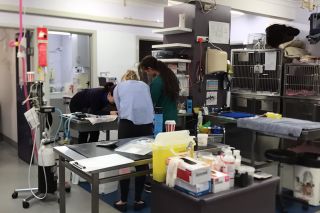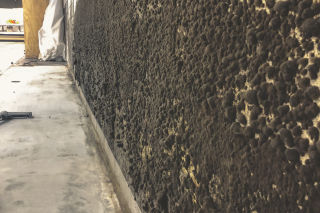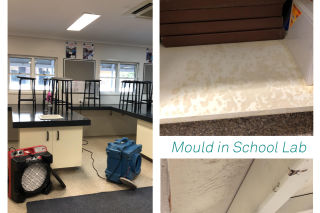Hospital Cold Room Cleaning
We were engaged to carry out specialised cleaning to cold rooms located at a Large Brisbane Hospital. Condensation in the cold rooms built up over time leading to mould growth. We were called in to remove the mould.
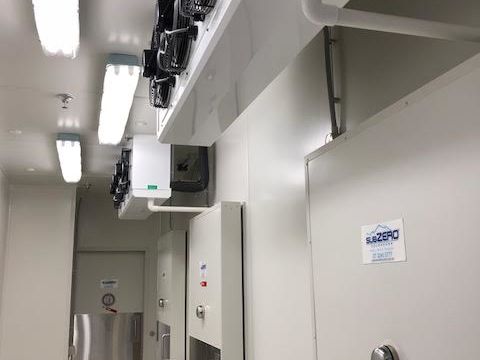
#Detail of The Problem
Freezer cold rooms used to store food are cooled to very low temperatures to preserve food and prevent the growth of bacteria and mould. Due to the opening of doors when entering rooms moisture levels can reach condensation point leading to slow build-up of ice, mould and other microbial contaminants.
Certain bacteria and moulds can survive cold temperatures and appropriate cleaning methodologies at regular intervals can significantly reduce microbial contamination risk in cold rooms. Clean cooling coils are more efficient and require less energy consumption and regular maintenance can save energy costs.
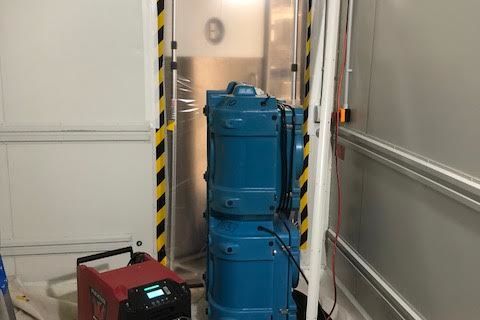
Using Hepa Air Scrubbers and Negative air to filter mould spores. Also a dehumidifier to remove moisture.
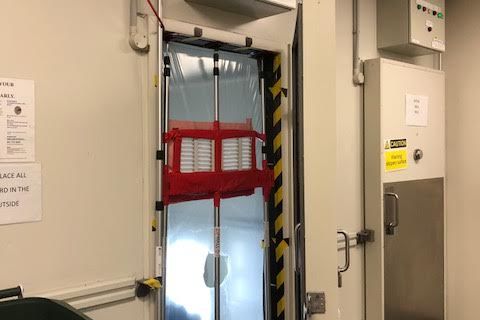
Installing filter in containment for negative pressure. Clean air is sucked in through the hepa filter.
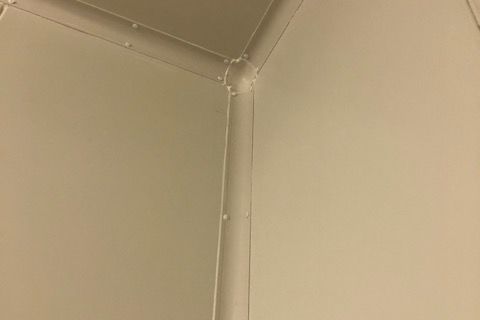
New Cold Room Screws installed with Silicone
#Scope
The Scope of Works for cleaning 7 Cold Rooms in total including the supply of specialised labour, drying and cleaning equipment, chemicals and consumables as well as personal protective equipment (PPE).
After site induction, mobilisation of equipment and consumables to site Freezer Cold Room containment in the form of a zip wall was set up. HEPA filtration units were installed to provide negative air pressure during cleaning works. Cooling coils were appropriately cleaned. Ceiling cornices, room wall edge cornices, standoff bars and pop rivets were removed based on visual contamination.
Silicone sealant from the cold room was removed, including from all gaps and corners etc. by scraping, HEPA vacuuming and wiping. After cleaning, gaps were silicon sealed and all removed and cleaned items were reinstated. The mould remediation clean was carried out by HEPA vacuuming all horizontal and vertical surfaces followed by cleaning of all surfaces with a Hazard Analysis and Critical Control Points (HACCP) certified cleaning agent. Floors were sponge mopped with appropriate equipment and a cleaning agent.
Post clean levels of hygiene were evaluated through ATP (Adenosine Triphosphate) testing to ensure that biofilms and surface contamination were successfully removed. Surfaces required a level of <10RLU in order to pass. Drying equipment was used during and after the cleaning process to remove excess moisture.
#ATP Post Verification Testing
In order to scientifically measure the cleanliness of surfaces ATP testing was conducted before and after the cleaning process. ATP (adenosine triphosphate) is present in all living cells and can be used as an indicator of biological contamination of surfaces. The unit for measurement of ATP is RLU (Relative Light Units). There are no regulatory standards for acceptable limits, however, data from hospitals and peer-reviewed studies have led to recommendations for acceptable RLU limits.
NLR has adopted the Broad Risk Category RLU Limit Recommendations by Hygiena (2018) as per Table 1. These recommendations are based on studies that have found that ATP monitoring confirms environmental contamination and measures the effect on the environment from cleaning practices (Mulvey et al, 2010)
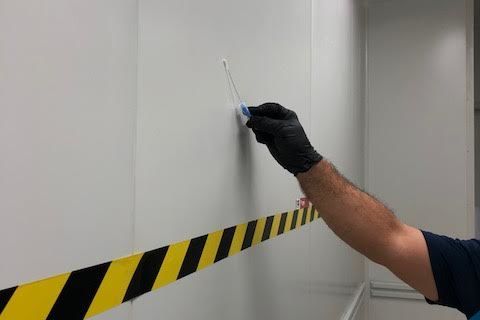
Swab Sample Taken From Cold Room Wall
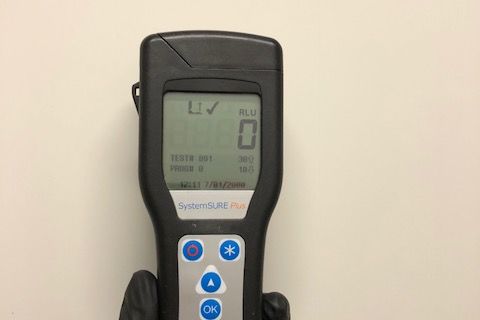
Swab inserted into ATP Tester for Instant Result
#Result
The client is happy that we cleaned 7 cold rooms in the facility within time and budget. All rooms were cleared by ATP testing. If you have any cold room cleaning queries or wish to book a cold room inspection, please don't hesitate to contact us. You can do this by clicking on the button below.
